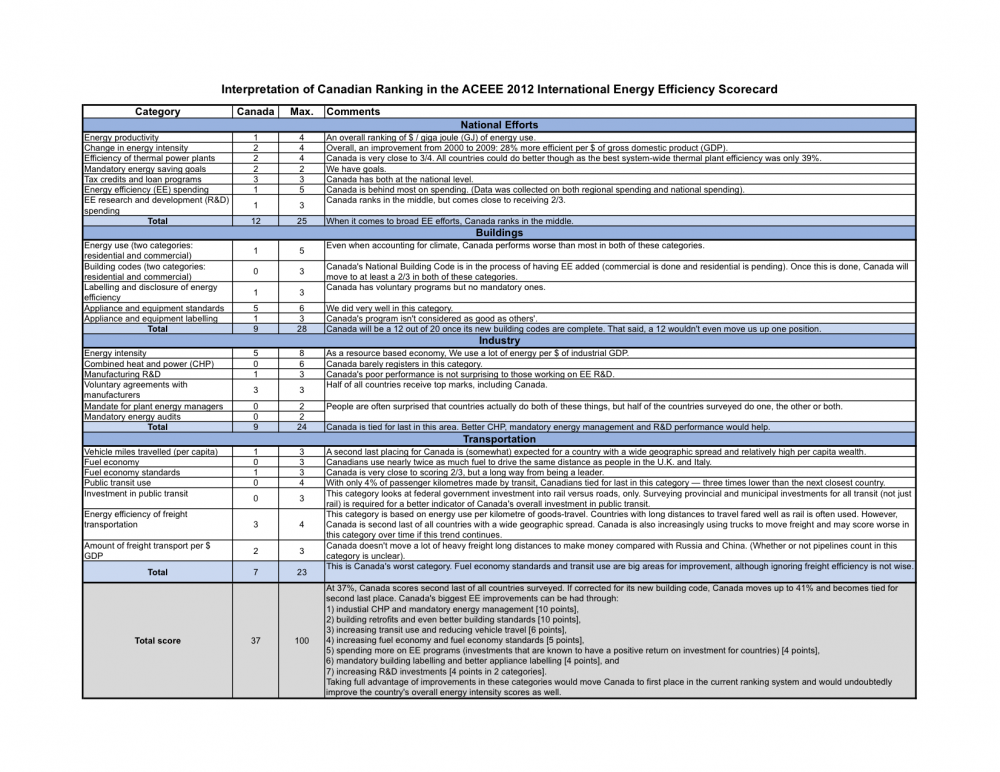The American Council for an Energy-Efficient Economy (ACEEE) recently came out with a scorecard measuring the energy efficiency of 12 of the world’s largest economies. Canada finished second last — right between Brazil and Russia. The U.K. and Germany topped the list.
So why did Canada do so badly?
Our poor showing is partially because of our large resource sector (led by the oil and gas industry) which is relatively energy intensive. We also did poorly because we drive a lot more than we use transit. This is partially a result of having a lot of land, but it ultimately comes down to the decisions we make about how we build our cities and how we choose to get around.
 On the other hand, geography doesn’t play as much of a role in the poor results that our building sector received (differences in weather are accounted for), or in our use of relatively inefficient cars and trucks, or when considering the fact that we don’t have a lot of the policies and programs in place at the federal level that other, more energy efficient countries do. (See the table below for more details).
On the other hand, geography doesn’t play as much of a role in the poor results that our building sector received (differences in weather are accounted for), or in our use of relatively inefficient cars and trucks, or when considering the fact that we don’t have a lot of the policies and programs in place at the federal level that other, more energy efficient countries do. (See the table below for more details).
Personally, I think the most important messages in this report are the things we can do to improve.
Energy efficiency is important for keeping costs down and building a country that is resilient to changes in the global marketplace. It is also well accepted as the most cost effective way to reduce greenhouse gas emissions — allowing us to reduce our impact on the climate while saving money.
For the industrial sector, the big energy efficiency opportunities identified in the scorecard involve generating more electricity at industrial plants so that the leftover heat can be used in industrial processes (i.e., combined heat and power plants), and having mandated energy managers and energy audits for plants.
For buildings, the big opportunities include energy retrofits, better building codes and mandatory energy labels so the marketplace can start driving energy improvements.
For transportation, increasing the use of transit and better fuel economy standards would help most.
And for all categories, spending more on energy efficiency programs as well as on research and development is important. Countries that make these investments have been shown to get a positive return on their investment. Canada should be one of those countries.









